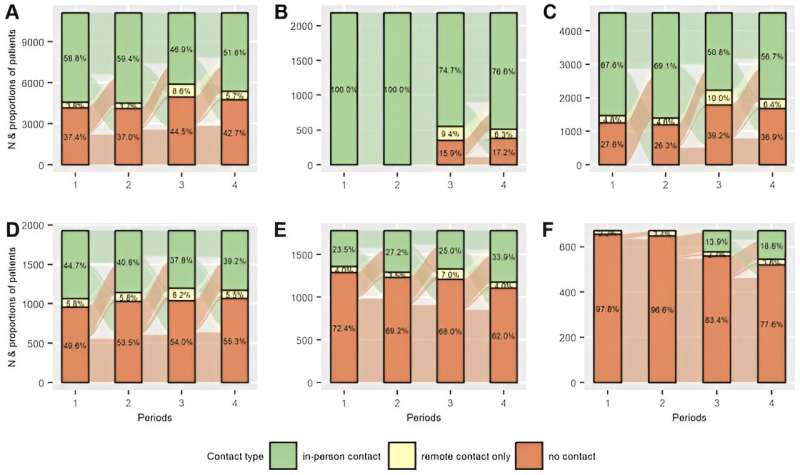
A recent study by the University of Eastern Finland published in the journal Primary Care Diabetes reveals varied impacts of the COVID-19 pandemic on individuals with type 2 diabetes in North Karelia, Finland.
The study compared care processes and outcomes during two periods of the first pandemic year (16 March 2020 to 15 March 2021) with the equivalent periods one year earlier (16 March 2019 to 15 March 2020).
Generally, there was a decline in health care visits and monitoring of blood sugar and cholesterol levels. However, distinct patterns emerged when evaluating patients based on their engagement in follow-up care in the three years preceding the pandemic, i.e., from 16 March 2017 to 15 March 2019.
The pandemic had the greatest effect on patients who, prior to the pandemic, had in-person contact at least every six months. Among them, service use decreased the most, with 1 out of 4 not seeking in-person contact during one of the two six-month periods following the onset of the pandemic.
“Patients with the most consistent pre-pandemic service use have greater service needs due to more comorbidities,” says Doctoral Researcher Laura Inglin from the University of Eastern Finland. “Despite the significant changes, service use remained highest among these patients who need close monitoring to prevent micro- and macrovascular complications.”
Conversely, patients who had no in-person contact before the pandemic exhibited a different trend. About 1 in 6 of these individuals had their first in-person contact in over three years during the pandemic.
The study used electronic health records data. The patient records comprised both public primary health care and specialized care in the whole region and was not gathered separately, but at the moment of care. “High-quality electronic health records, which provide structured and up-to-date information about patients and care processes, are a valuable source of information for the surveillance and management of type 2 diabetes,” Inglin says.
More information:
Laura Inglin et al, Consistent service use before the COVID-19 pandemic predicted the continuity of face-to-face appointments during the lockdown among type 2 diabetes patients, Primary Care Diabetes (2024). DOI: 10.1016/j.pcd.2023.12.003
University of Eastern Finland
Citation:
Diverging effects of the COVID-19 pandemic on type 2 diabetes care processes (2024, January 16)
retrieved 16 January 2024
from https://medicalxpress.com/news/2024-01-diverging-effects-covid-pandemic-diabetes.html
This document is subject to copyright. Apart from any fair dealing for the purpose of private study or research, no
part may be reproduced without the written permission. The content is provided for information purposes only.
_______
Source : medicalxpress.com